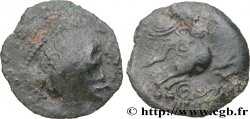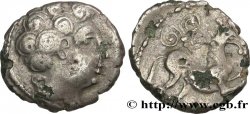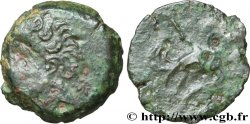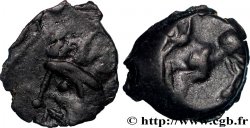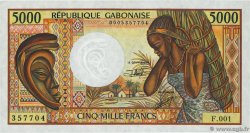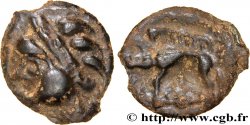Live auction - bga_412344 - GALLIA - ARVERNI (Area of Clermont-Ferrand) Statère d’or au lys et à la cigogne, type CAS
得先注册又得到批准才可以报价。为了报价注册. 客户应该得到公司允许,那种过程需要 48 个小时。别等出售结束那一天才登记。您报价的话等于您赞成买那物品,而且按« 保价 » 证明您接受 cgb.fr 因特网拍卖使用法.
报价时只可以出全数值欧元总额。物品描述也说明销售结束时间,结束后出价都不会生效。 报价命令转达有时变动,等到最后秒钟增加否决的可能会。想多了解的话请注意 因特网拍卖常问
最高出价方将支付18%的不含税的拍卖费用
最高出价方将支付18%的不含税的拍卖费用
| 估算 : | 15 000 € |
| 价格 : | 没有出价 |
| 最高出价 : | 没有出价 |
| 拍卖结束日期 : | 13 December 2016 15:01:00 |
种类 Statère d’or au lys et à la cigogne, type CAS
日期: c. 60 AC.
材质 gold
直径 17,5 mm
模子方针 6 h.
重量 7,43 g.
稀少度 R3
关于品相的说明
Statère sur un flan large et un peu ovale, avec un très bel avers bien centré et un revers un peu plus décentré et de frappe molle. Agréable patine de collection
家谱
Cet exemplaire provient de la collection François Roche puis André Bernard
正面
正面的文字 CAS.
正面的说明书 Tête diadémée masculine, jeune, imberbe à gauche, les cheveux courts.
背面
背面的文字 ANÉPIGRAPHE.
背面的说明书 Cheval bondissant à gauche ; une lyre au-dessus de la croupe ; amphore sous le poitrail.
评论
CAS a été interprété par de Saulcy comme étant le nom abrégé de CASTILLUS, chef gaulois, père de Vercingetorix (BG, VII, 4).
Cette série CAS se divise en trois selon les symbole autour du cheval ; une esse et une amphore comme sur les statères au nom de Vercingétorix, un lys et une cigogne comme sur notre exemplaire ou un lys et un trèfle. Ces monnaies circulent encore pendant la Guerre des Gaules.
Notre exemplaire est bien plus beau et plus complet que les exemplaires n° 127-130 publiés par S. Nietto (le n° 127, de la collection de Saulcy, provient du trésor d’Orcines et le n° 129 du trésor de Pionsat).
CAS was interpreted by de Saulcy as being the abbreviated name of CASTILLUS, Gallic chieftain, father of Vercingetorix (BG, VII, 4). This CAS series is divided into three according to the symbols around the horse: an esse and an amphora as on the staters in the name of Vercingetorix, a lily and a stork as on our example or a lily and a clover. These coins were still circulating during the Gallic Wars. Our example is much more beautiful and more complete than examples n° 127-130 published by S. Nietto (n° 127, from the Saulcy collection, comes from the Orcines treasure and n° 129 from the Pionsat treasure)
Cette série CAS se divise en trois selon les symbole autour du cheval ; une esse et une amphore comme sur les statères au nom de Vercingétorix, un lys et une cigogne comme sur notre exemplaire ou un lys et un trèfle. Ces monnaies circulent encore pendant la Guerre des Gaules.
Notre exemplaire est bien plus beau et plus complet que les exemplaires n° 127-130 publiés par S. Nietto (le n° 127, de la collection de Saulcy, provient du trésor d’Orcines et le n° 129 du trésor de Pionsat).
CAS was interpreted by de Saulcy as being the abbreviated name of CASTILLUS, Gallic chieftain, father of Vercingetorix (BG, VII, 4). This CAS series is divided into three according to the symbols around the horse: an esse and an amphora as on the staters in the name of Vercingetorix, a lily and a stork as on our example or a lily and a clover. These coins were still circulating during the Gallic Wars. Our example is much more beautiful and more complete than examples n° 127-130 published by S. Nietto (n° 127, from the Saulcy collection, comes from the Orcines treasure and n° 129 from the Pionsat treasure)








 对产品描述纠错
对产品描述纠错 打印
打印 分享我的选择
分享我的选择 提问
提问 Consign / sell
Consign / sell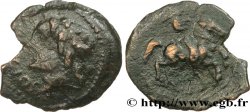
 产品介绍
产品介绍
